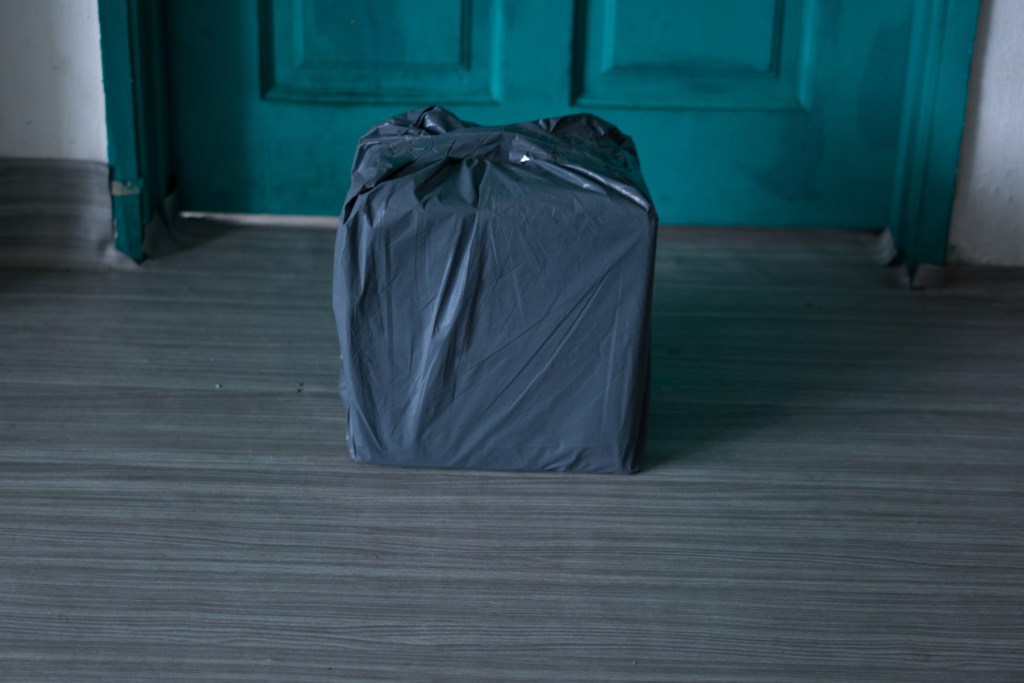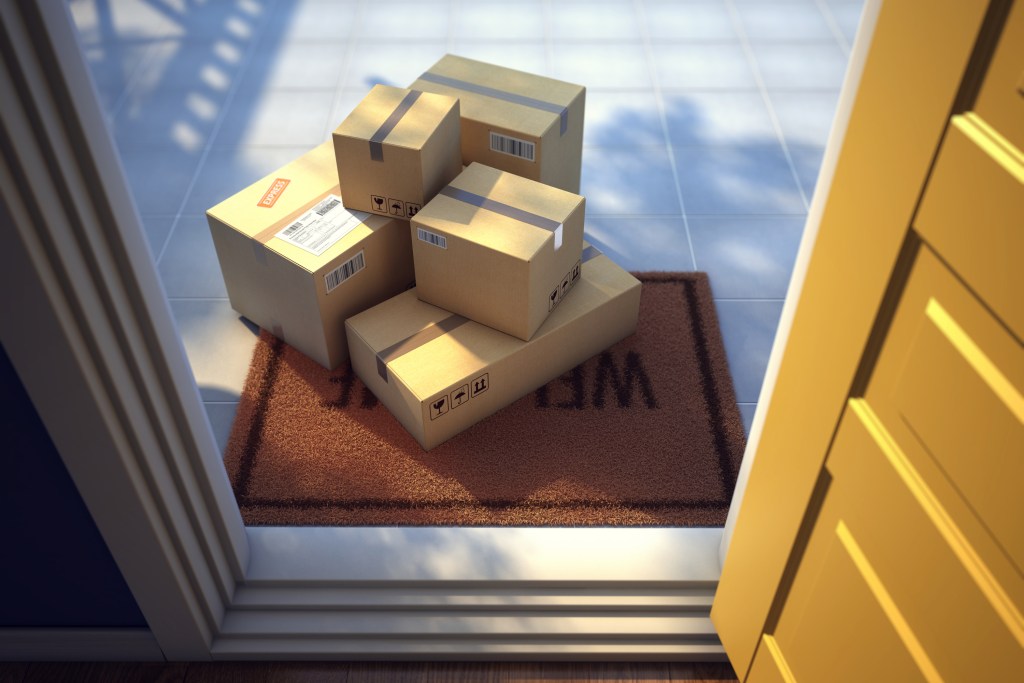The COVID-19 pandemic forced millions of people to stay at home as much as possible, leading to a spike in online shopping and takeout orders. Since consumers were unable to visit stores and restaurants in person or didn’t feel safe doing so, they turned to mobile apps and delivery services to procure their goods.
Numerous companies that sold goods online prior to the pandemic saw a huge increase in orders when lockdowns were implemented. Other businesses that ordinarily sold goods in brick-and-mortar locations shifted some or all of their operations online in order to stay afloat financially.
Buying goods online became a convenient alternative, allowing people to avoid situations where they might contract the coronavirus. Unfortunately, this came at the price of increased waste due to the paper, plastic, and foil wrapping of delivered goods.

Pandemic shopping has led to a sharp increase in discarded packaging
Products arrive in boxes, filled-air packages, and other types of containers that protect them from damage, whether they’re traveling across the city or across the world. Often, these aren’t recyclable materials, so the layers and layers of packaging end up in the trash.
It’s not just buying goods online that generates a lot of packaging waste. Returns are also a significant part of the problem.
Since consumers can’t see goods in person or try on clothing and shoes, they may place an order, be disappointed when they receive the product, and decide to send it back. Some consumers prefer to purchase products in multiple sizes or colors, choose the one that fits or looks best, and return the others. Those practices may make sense on an individual level, but on a large scale, they generate massive amounts of packaging waste.
“People are absolutely right to be concerned about the increase in packaging due to a rise in online shopping, though packaging has also fallen in some other areas during the pandemic,” Perry Wheeler, senior communications specialist for Greenpeace USA, noted.
He continued, “Ultimately, we need all the companies we support — whether online or in-person — to work to phase out their single-use packaging and shift toward package-free and reusable options for customers. The pandemic has absolutely made people more aware of the mounting packaging concerns that we all face and the need for something better.”
COVID-19 caused a surge in demand for single-use plastics
Before the pandemic, governments, businesses, and consumers were gradually moving away from single-use plastics because of their negative impact on the environment. Fears about the spread of the coronavirus, however, made single-use plastics seem like a safer option than reusable products. Concerns that the coronavirus could be spread via surfaces also prompted some companies to use more packaging than usual to allay consumers’ fears.
In response, numerous state and local governments lifted bans on plastic bags and scaled back or delayed other efforts to cut down on plastic waste.
Packaging waste can harm the environment
According to the United Nations Environment Programme, before the pandemic, one million plastic bottles and ten million plastic bags were purchased every minute, 50 percent of consumer plastics were intended to be used once, and 10 percent of all waste generated by humans was plastic. UNEP also reported that 90 percent of bottled water and 83 percent of tap water contained plastic particles and that every year, 100,000 marine animals were killed by plastic.
Some forms of plastic are recyclable, but often, they can’t be separated from other forms of waste, or the process to separate and recycle them is too expensive. Those types of plastics tend to wind up in landfills or bodies of water, where they can pollute the environment and harm wildlife. This was certainly a concern before the pandemic, but the rapid rise in online shopping exacerbated the problem and has made the need to act all the more urgent.

Plastic packaging is particularly problematic
Most plastics are manufactured via processes that use fossil hydrocarbons. The manufacturing of plastic generates harmful greenhouse gases that are significant contributors to climate change. Commonly used plastics are also not biodegradable, so when they’re deposited in landfills, they accumulate, rather than break down. Only thermal treatments can permanently destroy plastic waste, but those methods raise their own environmental concerns.
Discarded plastic can pollute waterways, and fish and animals that consume it can experience negative health effects. “Single-use plastic persists in our environment for decades, fragmenting into tiny microplastics that can be mistakenly eaten by animals or end up in our food and water supply,” according to Wheeler.
Small pieces of plastic can even make their way up the food chain to humans. Scientists are working to figure out the long-term effects of consuming small amounts of plastic over a period of time, as this phenomenon will likely persist well into the future.

Production of plastic has increased since the start of the pandemic
Prior to the COVID-19 pandemic, numerous companies were working on developing alternative types of packaging, including products made with paper, pulp, and forms of plastic that aren’t derived from petroleum, as well as reusable packaging. Some companies had been changing their production practices to reduce the amount of packaging required to store and transport them. Due to the coronavirus, many businesses scaled back or halted those research and development efforts.
Even before the pandemic, the shift to more efficient vehicles and electric cars reduced the demand for fossil fuels, motivating the oil and gas industry to invest billions of dollars in the development of new forms of plastic that are significantly cheaper than recycled plastic. The pandemic accelerated this industry’s losses, as there was a reduced demand for oil since fewer people were traveling.
Since the demand for new and cheaper plastic increased since the start of the pandemic, the oil, gas, and plastics industry worked to develop alternative and less expensive plastics. Unfortunately, these alternatives are not always recyclable or environmentally friendly.
Plastic recycling has declined during the pandemic
The increase in plastic usage was coupled with a decrease in recycling. Processing centers were shut down because of concerns that plastic waste might be contaminated with the coronavirus, and others slowed production and cut employees to allow for social distancing. Therefore, even recyclable waste ended up instead in landfills or waterways.
Some businesses are focusing on sustainability
Although sustainable packaging materials are available, they’re more expensive than commonly used supplies, such as plastic. Using sustainable materials on a large scale would mean businesses would pass those costs along to consumers, resulting in higher prices.
Wheeler noted that, even with the price increases, some businesses have begun reducing the amount of packaging they use. “We are already seeing innovative programs emerging around the world. Package-free options are becoming more prevalent with options like shampoo and conditioner bars rather than plastic containers,” he noted.
“And rent-a-cup or container programs are emerging globally,” Wheeler continued. “These programs allow customers to rent a container for a small deposit, which is returned to them once their container is dropped off after use.”
Wheeler added, “These programs incentivize reuse and make it easy for the customer by providing an in-store option. There are also delivery programs that are launching around the world to bring goods to customers in reusable packaging that is then collected after use, rather than throwaway paper or plastic.”

People may continue to shop online in high numbers after the pandemic
Even though millions of people across the United States have received COVID-19 vaccines, online shopping is expected to continue at these high pandemic-era levels. Consumers who are still nervous about going to stores in person or eating in restaurants, or those who simply came to appreciate the convenience of online shopping, may decide to continue with this new normal.
The spike in the use of packaging during the pandemic has increased the amount of plastic waste, but it’s too soon to fully understand the impact of changes in consumer habits. It will take time for governments, businesses, and environmental groups to compile data and assess both the short-term and long-term effects.
Consumers can promote sustainable packaging
Wheeler believes it’s essential to fundamentally change the way we think about packaging. “The plastic pollution crisis is a mounting global concern and one that we must urgently address; however, the solution is not to shift to another single-use material,” he stated. “Companies that are driving the pollution crisis must hear from their customers to demand reusable and package-free options. It is not enough for a company to simply shift from one harmful packaging type to another.”
Wheeler pointed out that businesses will have an incentive to respond to concerns about the environment if consumers make their voices heard. “The best thing a customer can do is to support a company that is incentivizing reuse and urge their favorite businesses to do more to shift away from single-use materials.”
“Companies need to hear from their customers that they are done with the throwaway culture that is being perpetuated and want these businesses to move in a better direction,” Wheeler added. “At our local retailers, we can talk to store managers and urge them to bring more package-free and reusable options into their stores. We have the power to vote with our dollar and support businesses that are starting to do things in a better way.”




